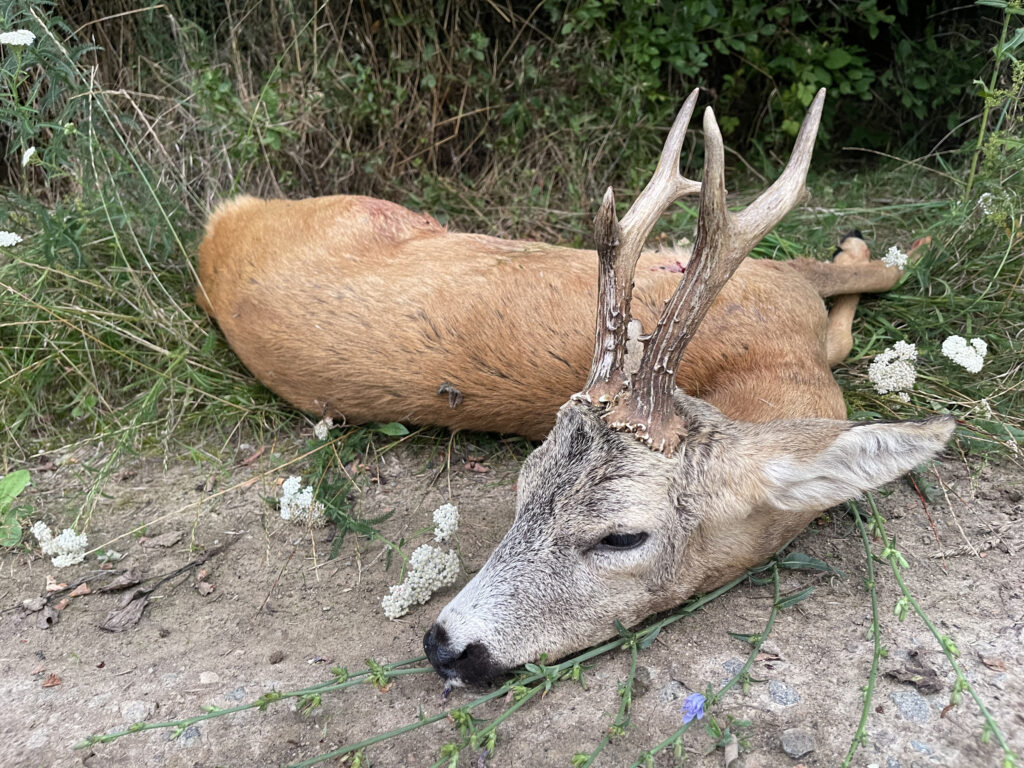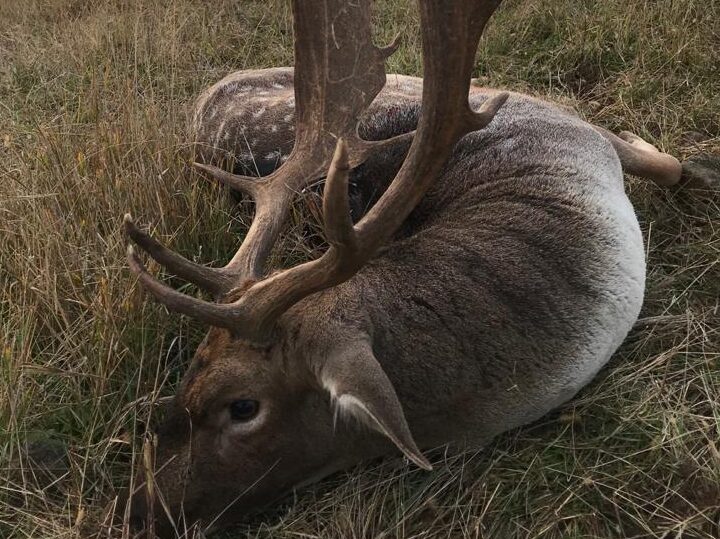game species
Red stag

While the precise appearance of deer varies between species, they generally share common physical traits. These include elongated legs adapted for swift running, keen senses of sight and hearing to detect predators, and a herbivorous diet primarily consisting of grasses, leaves, and shrubs.
One of the most distinctive features of male deer is their antlers, which they typically shed and regrow annually. These bony outgrowths serve various purposes, including combat during the mating season, establishing dominance within a social hierarchy, and display during courtship rituals.
Deer are typically social animals, forming groups known as herds or mobs. However, the size and composition of these groups vary between species and seasons. During mating season, male deer often engage in elaborate displays of dominance, including vocalizations, posturing, and sparring with their antlers.
Deer are adaptable creatures, inhabiting a wide range of ecosystems, including forests, grasslands, wetlands, and even urban areas. However, habitat loss, fragmentation, and human disturbance pose significant challenges to their survival in many regions.
As herbivores, deer play a crucial role in shaping plant communities through their browsing behavior. By consuming vegetation, they influence plant growth patterns, nutrient cycling, and the composition of ecosystems. Additionally, deer serve as prey for numerous predators, contributing to the intricate web of interactions within ecosystems.
MOUFLON

These creatures have a rich history intertwined with human civilization, dating back thousands of years. They were once abundant throughout their native range but have faced habitat loss and hunting pressure over the centuries, leading to their decline in many areas. However, conservation efforts have helped stabilize populations in certain regions, ensuring the survival of this iconic species.
Mouflons typically inhabit mountainous and forested areas, where they display remarkable agility and adaptability. Their keen senses and wary nature make them elusive and challenging to observe in the wild. With a diet consisting mainly of grasses, herbs, and shrubs, mouflons play a vital role in shaping their ecosystems as grazers and browsers.
During the breeding season, or rut, which usually occurs in late autumn or early winter, male mouflons engage in fierce competitions for dominance and mating rights. They clash horns with rivals in spectacular displays of strength and prowess, establishing hierarchies within their social groups.
Mouflon societies are structured around small herds led by dominant males, known as rams, who defend their territories and compete for the attention of females. Ewes, the females, give birth to single lambs after a gestation period of around five months. These lambs are precocial, meaning they are relatively well-developed at birth and can quickly follow their mothers, ensuring their survival in the challenging mountain environment.
Despite their wild and elusive nature, mouflons have also found a place in human culture and folklore. They have been depicted in ancient art and mythology, symbolizing strength, resilience, and the untamed spirit of the wilderness. Today, they continue to inspire admiration and fascination among nature enthusiasts and conservationists alike, serving as ambassadors for the preservation of wild places and the creatures that inhabit them.
wild boar

Originating in Eurasia, wild boars have been introduced to various continents, including North America, South America, Australia, and parts of Africa. Their ability to thrive in diverse habitats, from dense forests to open grasslands, has contributed to their success as a species.
Wild boars are omnivorous opportunists, with a diet that includes roots, tubers, fruits, nuts, insects, small mammals, and even carrion. Their keen sense of smell and well-developed digging skills allow them to forage efficiently, often rooting up large areas of soil in search of food.
These creatures are highly adaptable and can breed prolifically, with females, called sows, producing litters of piglets numbering anywhere from four to twelve or more. The piglets, born with distinctive stripes that fade as they mature, are precocial and quickly learn to follow their mother in search of sustenance and safety.
While wild boars are known for their intelligence and social complexity, they can also be a source of conflict with humans. In areas where their populations overlap with human settlements or agricultural lands, wild boars may cause damage to crops, gardens, and property. Additionally, their aggressive behavior and potential to carry diseases such as swine fever pose risks to livestock and domestic pigs.
Despite these challenges, wild boars hold cultural significance in many societies and have been featured in folklore, mythology, and art for centuries. In some cultures, they symbolize strength, fertility, and abundance, while in others, they are seen as symbols of ferocity and untamed wilderness.
Efforts to manage wild boar populations often involve a combination of hunting, trapping, fencing, and other measures aimed at mitigating human-wildlife conflicts and preserving ecological balance. As humans continue to navigate their complex relationship with these remarkable animals, understanding and respect for their role in the natural world remain essential.
Roe deer

The roe deer holds a significant place in the ecosystem of Europe, Asia, and parts of the Middle East. This elegant cervid, characterized by its reddish-brown fur adorned with a striking white rump patch, roams across a diverse range of habitats, from dense forests to open grasslands. Their adaptability to various environments reflects their remarkable resilience as a species.
Inhabiting a wide geographic range, roe deer exhibit remarkable behavioral traits and adaptations. Typically solitary creatures, they are most active during twilight hours, utilizing their acute senses of smell and hearing to detect potential threats. Their diet primarily consists of herbaceous vegetation, including leaves, shoots, and berries, though they may also consume small insects when necessary. This dietary flexibility enables them to thrive in a variety of ecosystems.
One of the most notable features of roe deer is their remarkable agility and leaping ability. With powerful hind legs, they can effortlessly bound through dense vegetation, escaping predators or navigating challenging terrain. These graceful movements, coupled with their slender physique, evoke a sense of harmony with their surroundings, making them a captivating sight for nature enthusiasts and wildlife observers alike.
Despite their remarkable adaptability, roe deer face various threats to their survival. Habitat loss due to deforestation, agricultural expansion, and urbanization poses a significant challenge, fragmenting their natural habitats and limiting their range. Additionally, illegal hunting and poaching continue to exert pressure on roe deer populations in some regions, despite conservation efforts aimed at protecting these vulnerable species.
Efforts to conserve roe deer populations involve a multifaceted approach, including habitat preservation, wildlife corridors establishment, and enforcement of hunting regulations. Conservation organizations work tirelessly to raise awareness about the importance of protecting these graceful creatures and their habitats, engaging in research, education, and advocacy initiatives to safeguard their future.
In conclusion, the roe deer stands as a symbol of resilience and adaptability in the face of environmental change. Through conservation efforts and public awareness, we can ensure that future generations continue to marvel at the beauty and grace of these enchanting cervids, preserving their place in the rich tapestry of our natural world.
Fallow deer

The fallow deer holds a prominent place in the cultural and ecological landscape of Europe and beyond. Originating from the Mediterranean region, fallow deer have been introduced to numerous countries worldwide, admired for their aesthetic beauty and prized for their value in hunting and game management.
Distinguished by their striking appearance, fallow deer exhibit a range of coat colors, from deep chestnut to creamy white, often adorned with characteristic white spots scattered across their bodies. Males, known as bucks, are further distinguished by their impressive palmate antlers, which they grow and shed annually as part of their reproductive cycle. These antlers serve not only as weapons during the mating season but also as symbols of dominance and status within the herd.
Fallow deer are predominantly herbivorous, feeding on a diverse array of vegetation including grasses, herbs, leaves, and fruits. Their adaptability to various habitats, including forests, woodlands, and open grasslands, enables them to thrive in diverse ecosystems. Their browsing behavior contributes to shaping vegetation dynamics, influencing plant communities and ecosystem structure.
Socially, fallow deer are gregarious animals, forming mixed-sex herds outside of the breeding season. During the rutting season, which typically occurs in the fall, males engage in fierce competitions for mating rights, emitting deep guttural calls and engaging in elaborate displays to attract females. This period of heightened activity and aggression serves to ensure reproductive success and perpetuate the species.
Despite their resilience and adaptability, fallow deer face numerous threats to their survival. Habitat loss and fragmentation due to urbanization, agricultural expansion, and land development pose significant challenges to their long-term viability. Additionally, overhunting and poaching continue to impact fallow deer populations in certain regions, necessitating careful management and conservation efforts to ensure their protection.
Conservation initiatives aimed at safeguarding fallow deer populations encompass a range of strategies, including habitat restoration, population monitoring, and sustainable hunting practices. Collaborative efforts between government agencies, conservation organizations, and local communities are crucial for mitigating threats and promoting the coexistence of fallow deer with human activities.
In summary, the fallow deer epitomizes beauty, grace, and resilience in the natural world. Through concerted conservation actions and public awareness, we can ensure the continued presence of these magnificent creatures in our forests, parks, and landscapes, enriching our lives and ecosystems for generations to come.
